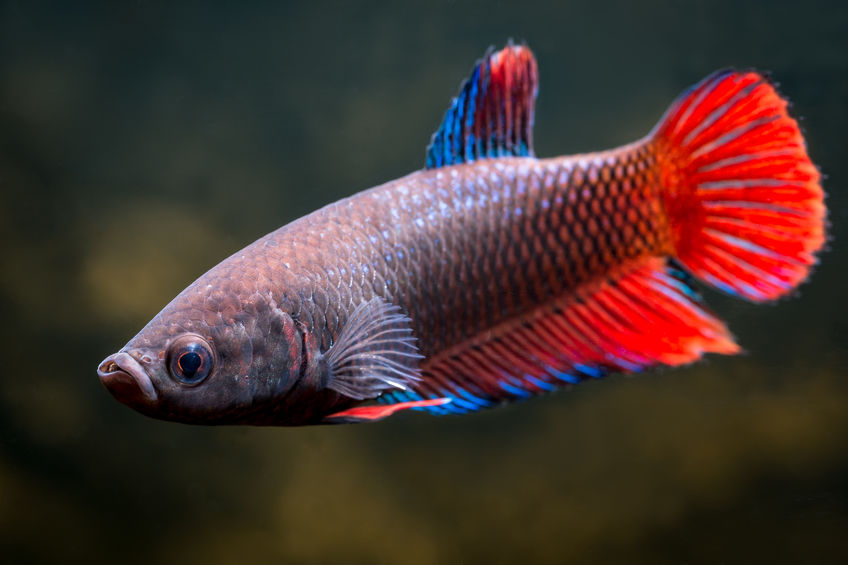Get to know female betta fish and their unique characteristics, and care tips, by reading our comprehensive article about female betta fish. Find out how to ensure the well-being of these captivating aquatic beauties by becoming an expert on female betta fish.
What is Female Betta Fish?
The female betta fish, with their vibrant colors and graceful movements, reveal the mysteries of the enchanting aquatic realm. This comprehensive guide provides insight into the world of female betta fish, sheds light on their distinctive characteristics, and offers valuable advice on how to care for them.
Characteristics of Female Betta Fish
Several distinctive traits set betta fish apart from their male counterparts. It is essential to understand these traits to provide appropriate care and ensure the welfare of these enchanting animals. Betta fish females have the following characteristics:
Multiple Colors and Patterns
Several colors and patterns can be seen on female Bettas, making each animal a unique work of art. Scales of these animals exhibit iridescent hues and intricate patterns, making them particularly attractive.
Smaller Size
Bettas belonging to the female species are slightly smaller than those belonging to the male species. The small size of these fish makes them suitable for use in small aquariums and community aquariums.
Shorter Fins
There is a general difference in fin length between males and females of betta fish. They have more delicate and graceful fins than their male counterparts, even though their fins do not appear as flamboyant.
Less Aggressive
There is a general difference between male and female bettas in terms of aggression, so they make good candidates for community tanks. To prevent aggression issues, it is important to monitor their interactions and ensure a proper tank setup.
Egg Spot
Betta females have a white spot on their bellies that is known as an “egg spot”. This visual cue serves as a guide for the male bettas when they are courting and breeding.
Labyrinth Organ
The female bettas possess a labyrinth organ that allows them to breathe air from the surface of the water. They can survive in low-oxygen environments and add to their resilience as a result of this adaptation.
Caring for Female Betta Fish

A female betta fish’s health and well-being are dependent on providing them with optimal care. Following are some guidelines that will ensure your aquatic companions have a prosperous environment:
Tank Setup and Environment
The creation of suitable habitats is vital for the overall well-being and vitality of female betta fish. The following factors should be taken into consideration when setting up a fish tank:
Tank Size:
There is a minimum requirement of 5 gallons for female Bettas so that they can swim and explore freely. Larger tanks provide a more stable environment, so they are always preferred.
Filtration and Heating:
Maintain water quality and temperature stability by installing a gentle filtration system and a reliable heater. There is a critical temperature range between which female Bettas may thrive. This range is between 78°F and 82°F (25.5°C and 27.8°C).
Aquarium Décor:
Plants, rocks, and caves can be incorporated into a tank to provide hiding places and resting places for your fish. Betta fish females benefit from these additions by providing security and stimulation.
Feeding and Nutrition
The female betta fish need to eat a well-balanced diet to maintain their overall health and vitality. The following guidelines should be followed:
Quality Betta Pellets:
The primary source of food for bettas should be high-quality betta pellets. The best way to ensure that your betta is receiving the proper nutrients is to buy pellets specifically designed for it.
Variety with Supplements:
The diet of these animals should be supplemented with a variety of live or frozen foods, such as bloodworms, daphnia, and brine shrimp. Their meals will be made more interesting with these protein-rich treats.
Portion Control:
Your female bettas should be fed small portions twice or three times a day, ensuring that the food is consumed within a short period. There are several health risks associated with overeating, such as obesity.
Must Read: Chipmunk vs Squirrel Understanding the Differences and Similarities
FAQ`s
1. Can female betta fish live together in the same tank?
Betta fish can live together in the same tank if the females are of the same gender. To minimize potential aggression, it is important to carefully monitor their behavior and provide them with ample space and hiding places.
2. Do female bettas need a heater?
The temperature should be maintained between 75 degrees Fahrenheit and 80 degrees Fahrenheit. Bettas can be killed by cold water since their immune system will be suppressed and they will be more susceptible to disease. They might grow uncomfortable and age more quickly as a result of the hot water’s increased metabolic rate. Heaters should be used to maintain the temperature.
Conclusion:
Aquatic enthusiasts will appreciate the elegance and vibrant colors of female betta fish. The key to ensuring their well-being is to understand their unique characteristics and provide them with optimal care.
Provide them with a suitably sized habitat, ensure that the water is of good quality, provide them with a balanced diet, and choose their tankmates carefully. Betta fish thriving in the right environment will bring joy to your aquatic sanctuary if they are properly cared for.




